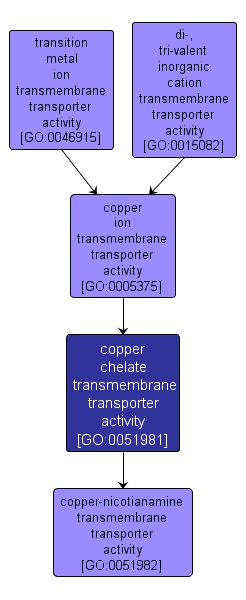GO TERM SUMMARY
|
| Name: |
copper chelate transmembrane transporter activity |
| Acc: |
GO:0051981 |
| Aspect: |
Molecular Function |
| Desc: |
Catalysis of the transfer of a copper chelate from one side of a membrane to the other. A copper chelate is a heterocyclic compound having a metal ion attached by coordinate bonds to at least two nonmetal ions. |
|

|
INTERACTIVE GO GRAPH
|














